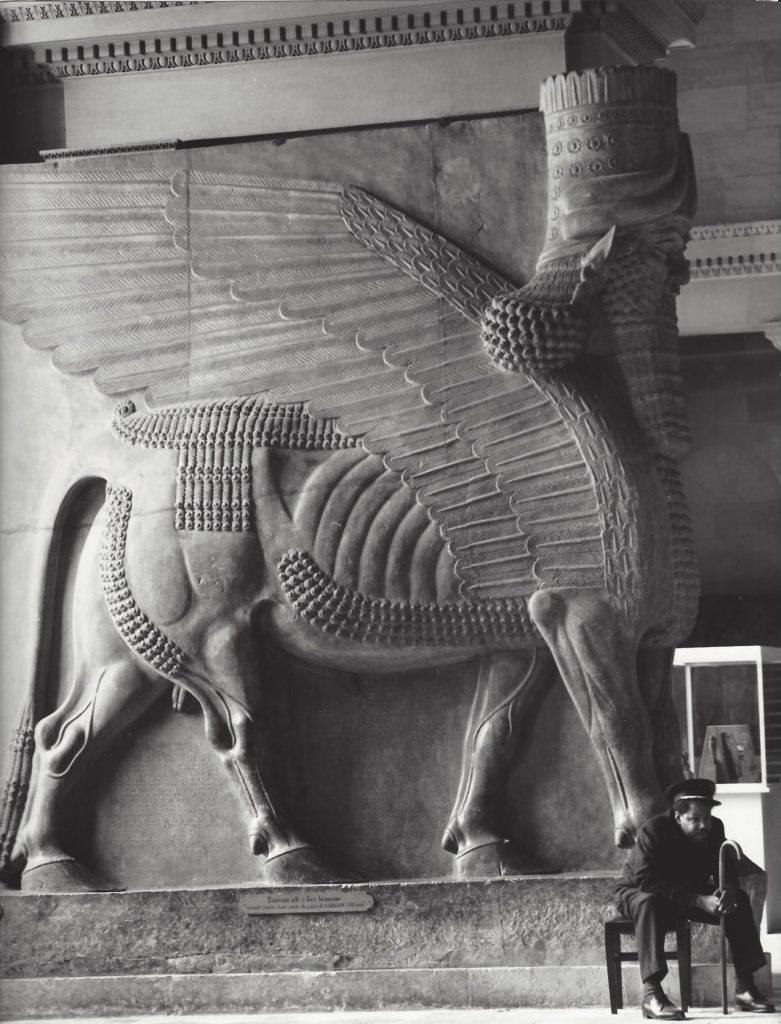Terumah relays God’s instructions to the Israelites for constructing the Mishkan, the Holy Tabernacle. The most important part of this elaborate structure was undoubtedly the Aron HaKodesh, the Ark of the Covenant. Throughout the centuries, this gold-plated Ark has often been depicted in art, history, and even film (most notably with Indiana Jones in Raiders of the Lost Ark). However, what the Ark actually looked like is hard to discern. The Ark disappeared two and a half thousand years ago when the First Temple was destroyed. Since then, many different versions and interpretations for its appearance have been proposed, both by Jewish Sages and secular scholars.
The issue is not so much with the Ark itself, since the Torah is pretty clear on its description: a box two and a half cubits long, one and a half cubits wide, and one and a half cubits high, made of wood and plated with gold from the inside and out. (A cubit is roughly two feet long.) What’s not so clear is the Ark’s cover, with its two golden Cherubs.
What is a “Cherub” (kruv, in Hebrew)? The only descriptor the Torah gives is that the Cherubs had wings. Rashi, drawing from the Talmud, comments on Exodus 25:18 that they had the face of a child. The Torah describes the two as being set on the cover ish el echav, literally “a man facing his brother”. This suggests a human form to the Cherubs, along with their child-like face and wings. Indeed, this is how the Cherubs are generally depicted. The reality may be quite different, though. A look at the historical and Biblical evidence may shed some more light as to the true identity of the Cherubs.
The Evidence
A similar word for the Hebrew term kruv is found across the languages of the Ancient Near East: kuribu in Akkadian, karabu or kirubu in Babylonian and Assyrian. These refer to very large statues placed at entrances to important venues which served as guardians. They had the body of a bull or lion, with wings, and a human head. At times, they were worshipped as guardian deities.
This parallels the Torah’s original description of Cherubs. The very first time Cherubs appear is in Genesis 3:24. Following Adam and Eve’s banishment from the Garden of Eden, God placed Cherubs to guard the entrance to Eden so that man could not return. Like the Mesopotamian kuribu, the Cherubs are guarding an entrance.
All of this is reminiscent of a famous passage in the Tanakh: Ezekiel’s Vision of the Chariot.This could be why the Cherubs were placed atop the Ark, again as guardians of the holy vessel. When the Tanakh describes how King Solomon built the Temple in Jerusalem (I Kings, chapter 6), it states that Solomon had two massive ten-cubit high Cherubs placed at the entrance to the Holy of Holies (the room in which the Ark of the Covenant was kept). The following chapter describes them as kruvim arayot, “Cherub-Lions” (7:36). Not only do we once again see the Cherubs as guarding an entrance, but we now have some evidence that the Cherubs had a lion-like appearance, just as the Mesopotamian kuribu (or lamassu) often had.

Kuribu were also known as lamassu. This is a photo by Kees Scherer, taken in the Louvre Museum in 1968, of a massive lamassu statue from King Sargon II’s palace, dated back to the 8th century BCE. It is from nearly the same time period as King Solomon’s giant Cherubs, which would have been about the same size.
Ezekiel’s Chariot
In the first chapter of the Book of Ezekiel, we are given a detailed description of the Merkavah, the Divine Chariot:
And I looked, and, behold, a stormy wind came out of the north, a great cloud, with a fire flashing up, a brightness was all around it; and from within the appearance of electrum, out of the midst of the fire. And from within it came the likeness of four living creatures. And this was their appearance: they had the likeness of a man. And every one had four faces, and every one of them had four wings. And their feet were straight feet; and the sole of their feet was like the sole of a calf’s foot… As for the likeness of their faces, they had the face of a man; and all four had the face of a lion on the right side; and all four had the face of an ox on the left side; all four had also the face of an eagle.”
(Ezekiel 1:4-10)
Ezekiel describes his angelic vision, with winged figures that have attributes of a lion, an ox, an eagle, and the appearance of a man. The figures are part of the Divine Chariot, again serving as sentries or guardians.
This description allows us to potentially synthesize the Torah’s description of Cherubs with the historical and Biblical evidence: human-like winged creatures with aspects of a lion and a bull or ox. Although Cherubs are not explicitly mentioned in Ezekiel’s account, the Merkavah shares the same root letters (k-r-v or r-k-v) as Cherubs, kruvim.
We can draw further proof from the Psalms 18:11, which states that God “rode upon a Cherub, and flew, and swooped down upon the wings of the wind,” as well as from II Samuel 22:11, which says God “rode upon a Cherub, and flew, and was seen upon the wings of the wind.” Clearly, the Cherubs are associated with the Divine Chariot upon which God rides, as described by Ezekiel.
So, are the Cherubs innocent child-like, winged angels—as commonly depicted in artwork—or are they powerful Heavenly guardians with the hybrid qualities of various majestic beasts?
The above is an excerpt from Garments of Light, Volume Two. Get the book here!


Pingback: » Mysteries of the Mishkan: Understanding the Tabernacle and its Sacrifices Mayim Achronim